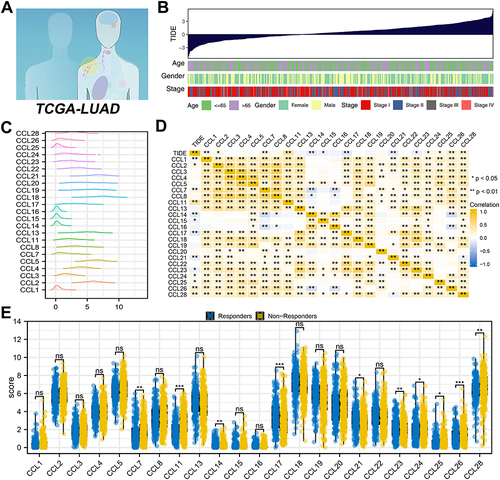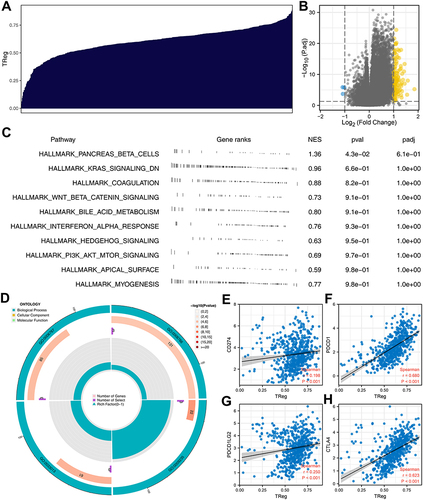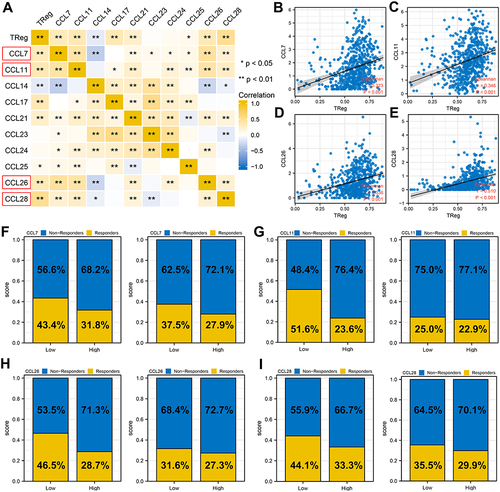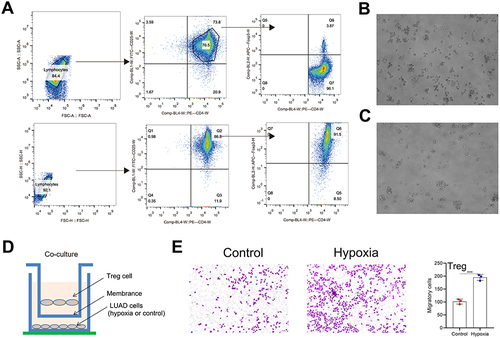Figures & data
Figure 1 Exploration of CC chemokines family in lung cancer.

Figure 2 Treg affects immunotherapy of lung cancer.

Figure 3 Biological exploration of Treg.

Figure 4 Further exploration of CCL7, CCL11, CCL26 and CCL28.

Figure 5 Hypoxia was associated with the Treg infiltration and CCL7, CCL11, CCL26, CCL28.

Figure 6 Clinical correlation of CCL7, CCL11, CCL26, CCL28.

Figure 7 Hypoxia induces HIF-1α and CCL28 elevation.

Figure 8 HIF-1α can regulate the CCL28 expression.

Figure 9 Isolation and identification of Treg cells.

